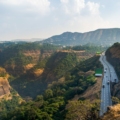Snow Leopard Spotting in Spiti Valley in Winter – Best Winter Wildlife Destination in India
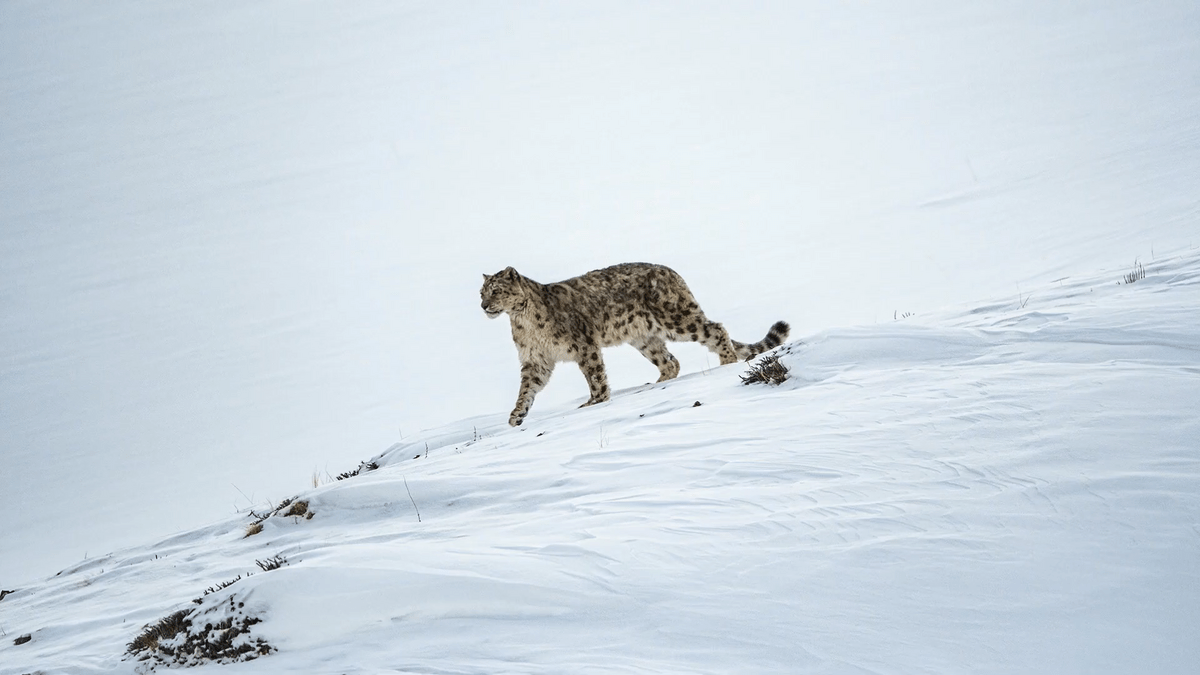
In this Blog
Snow Leopard Spotting in Spiti Valley in Winter: India’s Rarest Wildlife Experience
Snow leopard spotting in Spiti Valley in winter is one of the most thrilling wildlife adventures in India. Between November and March, this Himalayan desert turns into a pristine white wilderness where the elusive “ghost of the mountains” prowls silently across the ridges.
For wildlife enthusiasts and photographers, Spiti Valley isn’t just a destination—it’s the best winter wildlife destination in India, offering the rare chance to observe snow leopards in their natural habitat, along with Himalayan ibex, blue sheep, and golden eagles.The best place to spot snow leopards in India is Spiti Valley in Himachal Pradesh during winter (January–March), especially around Kibber and Pin Valley, where expert trackers lead guided expeditions.
Why Spiti Valley Tops the List of Winter Wildlife Destinations in India
Spiti Valley’s extreme altitude, sparse human presence, and protected zones like Kibber Wildlife Sanctuary and Pin Valley National Park make it India’s snow leopard capital.
During winter, these majestic cats descend closer to villages, increasing sighting probabilities.
Quick Highlights:
- Altitude: 3,000–5,000 meters
- Prime season: Mid-January to March
- Main zones: Kibber, Pin Valley, and nearby Hemis National Park in Ladakh
- Average sighting success rate: 70–80% on guided expeditions
1. Kibber: The Epicenter of Snow Leopard Tracking in Spiti
Altitude: ~4,200 m
Best Time: Mid-January – Early March
Nearest Town: Kaza (18 km)
Perched high above the Spiti River, Kibber is the most reliable location for snow leopard sightings in India. It falls within the Kibber Wildlife Sanctuary, covering over 1,400 sq km of rugged cliffs and alpine slopes- ideal leopard territory.
What to Expect
Local guides, often trained by the Snow Leopard Conservancy India Trust, track pugmarks and movement patterns daily. You’ll trek to vantage points like Gete and Tashigang for dawn sightings.
Wildlife to Spot:
- Snow leopard (Panthera uncia)
- Himalayan ibex
- Blue sheep (bharal)
- Tibetan wolf
- Lammergeier vulture
How to Reach:
From Kaza, Kibber is a 40-minute drive via well-maintained but snow-laden roads. The Kinnaur route remains open in winter, unlike Manali-Spiti.
Best Tips:
- Stay at local homestays to support eco-tourism.
- Carry binoculars and wear full snow gear.
- Join community treks to increase your sighting chances.
2. Pin Valley National Park: Frozen Wilderness of Rare Wildlife

Altitude: 3,500–6,000 m
Best Time: December – March
Nearest Town: Kaza (32 km)
Part of the Cold Desert Biosphere Reserve, Pin Valley National Park offers the surreal mix of wildlife and snow-covered silence. Spread across nearly 970 sq km, it’s a protected refuge where snow leopards follow herds of bharal and ibex across icy ridges.
What to Expect
In winter, temperatures drop to –20°C, and the frozen Pin River turns into a natural corridor for wildlife. Local trackers guide you to vantage points around villages like Mudh and Sagnam, known for leopard movement.
Wildlife to Spot:
- Snow leopard
- Siberian ibex
- Red fox
- Himalayan snowcock
- Golden eagle
Cultural Add-On:
Visit Kungri Monastery, one of Spiti’s oldest, to witness the fusion of culture and wilderness.
How to Reach:
From Kaza, reach Pin Valley by road (2–2.5 hours). The road remains accessible through the Kinnaur route even in deep winter.
3. Hemis National Park: The Legendary Land of the Ghost Cat
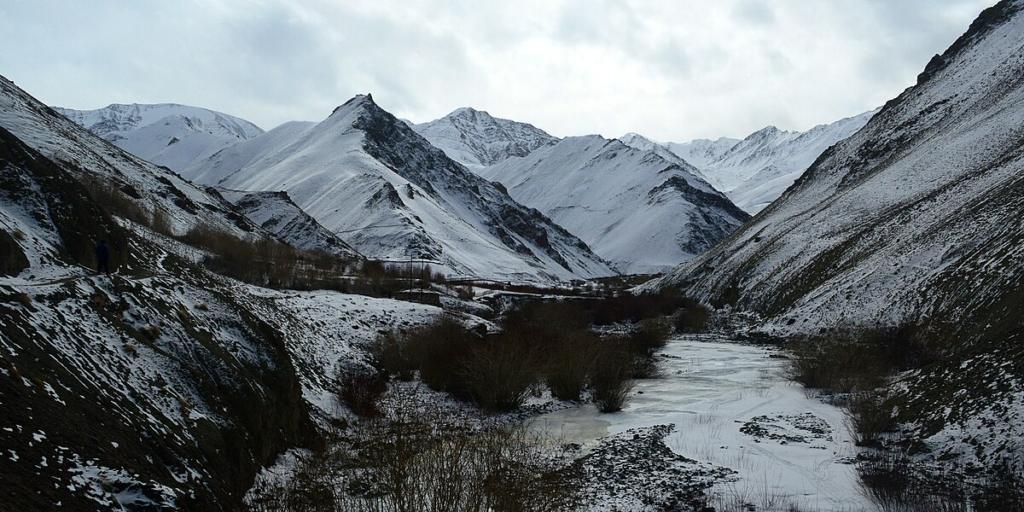
Altitude: 3,000–6,000 m
Best Time: January – March
Nearest Town: Leh (45 km)
Located in Ladakh, Hemis National Park is India’s oldest and largest snow leopard reserve. Spanning 4,400 sq km, this protected park shelters over 200 snow leopards and plays a crucial role in Project Snow Leopard. Hemis National Park boasts the highest snow leopard density in the world, making it a prime winter wildlife destination globally.
What to Expect
Rumbak Valley and Markha Valley are known for sightings. Guided treks combine wildlife watching with monastery visits, especially to Hemis Monastery, Ladakh’s cultural gem.
Wildlife to Spot:
- Snow leopard
- Ladakh urial
- Tibetan argali
- Himalayan marmot
- Red fox
How to Reach:
Fly to Leh, then drive to Zingchen or Rumbak (entry gates). Most winter expeditions start from Leh, with acclimatization stays before entering the park.
4. Chicham, Langza, and Hikkim
Small villages like Chicham, Langza, and Hikkim often act as vantage points for tracking. Local guides spot pugmarks, scat, or prey remains to predict snow leopard movement.
While infrastructure here is basic, the experience is raw and immersive. Expect long treks, sub-zero temperatures, and the pure thrill of witnessing one of nature’s rarest spectacles.
How to Plan Your Snow Leopard Expedition
1. Get Acclimatized
Spiti’s altitude ranges from 3,000–4,500 m, and winters can be unforgiving.
Spend at least 1–2 days acclimatizing in Kaza before heading higher to Kibber or Pin Valley. Altitude sickness is common — hydrate well and rest.
2. Choose the Right Guide or Tour
Local trackers are your best allies. They know:
- Active snow leopard corridors
- Fresh pugmark zones
- Recent sighting updates
- Safe trekking routes
Several eco-tour operators in Kaza and Kibber offer snow leopard tracking tours, which include local guides, meals, and wildlife permits.
3. Best Time to Visit
| Season | Chance of Sightings | Conditions |
| December–March | Highest | Sub-zero temperatures, snow-covered terrain |
| January–February | Peak months | Snow leopards descend to lower altitudes |
| April onwards | Very low | Cats retreat to higher ridges |
The best time to see snow leopards in Spiti Valley is between January and February, when heavy snowfall pushes them to lower altitudes near Kibber and Pin Valley.
- Weather: –20°C to –5°C
- Minimum Duration: 7–10 days recommended
4. Permits & Regulations
Foreign visitors require restricted-area permits (arranged via tour operators or DC office, Kaza/Leh). Always hire licensed wildlife guides.
5. Essential Gear Checklist
Pack for survival and patience — spotting can take hours or days.
- Heavy-duty winter clothing (–20°C capable)
- Down jacket and insulated boots
- Gloves, balaclava, thermal layers
- Binoculars or spotting scope
- Camera with zoom lens
- Portable charger, sunscreen, lip balm
4. Responsible Wildlife Etiquette
Ethical wildlife tourism is key to protecting these endangered cats.
- Never approach too close or make noise
- Avoid feeding or baiting animals
- Follow local conservation rules
- Travel with licensed guides only
- Maintain distance and silence near wildlife
- Dispose of waste responsibly
Pro Tip: Carry reusable bottles, biodegradable waste bags, and avoid plastic — Spiti is an ecologically fragile region.
“The best snow leopard sighting is the one that leaves only footprints and takes only memories.”
Where to Stay
After a long, cold day of tracking, nothing feels better than a cozy, heated stay with a view of snow-clad peaks. While most wildlife travellers prefer homestays near Kibber, travellers looking for comfort can explore StayVista villas in and around Himachal that offer both warmth and luxury.
The Lama House, Manali
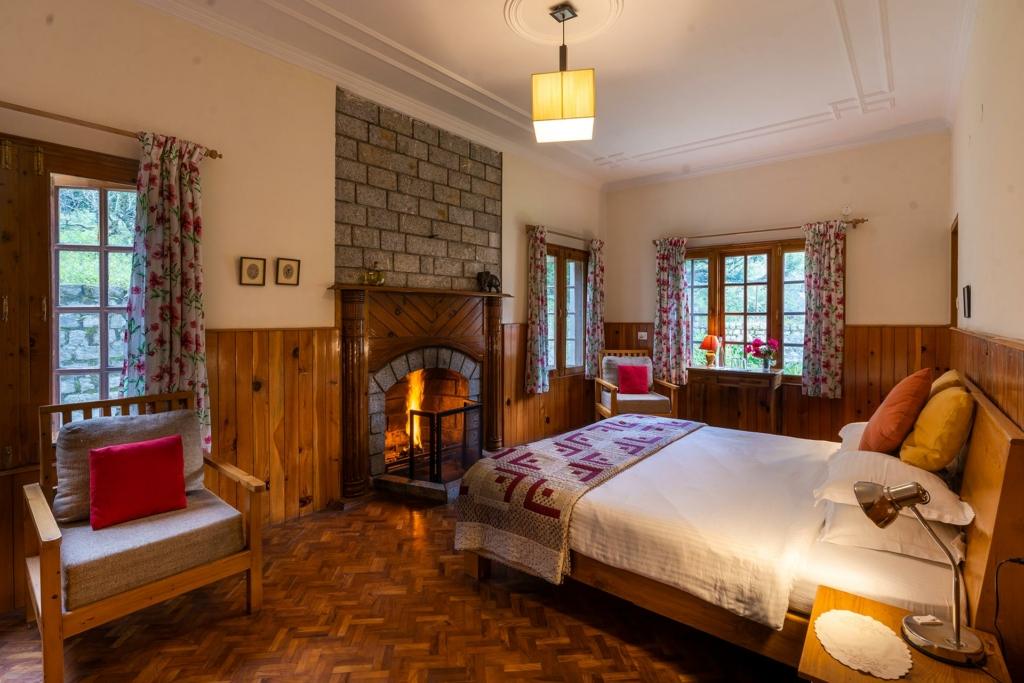

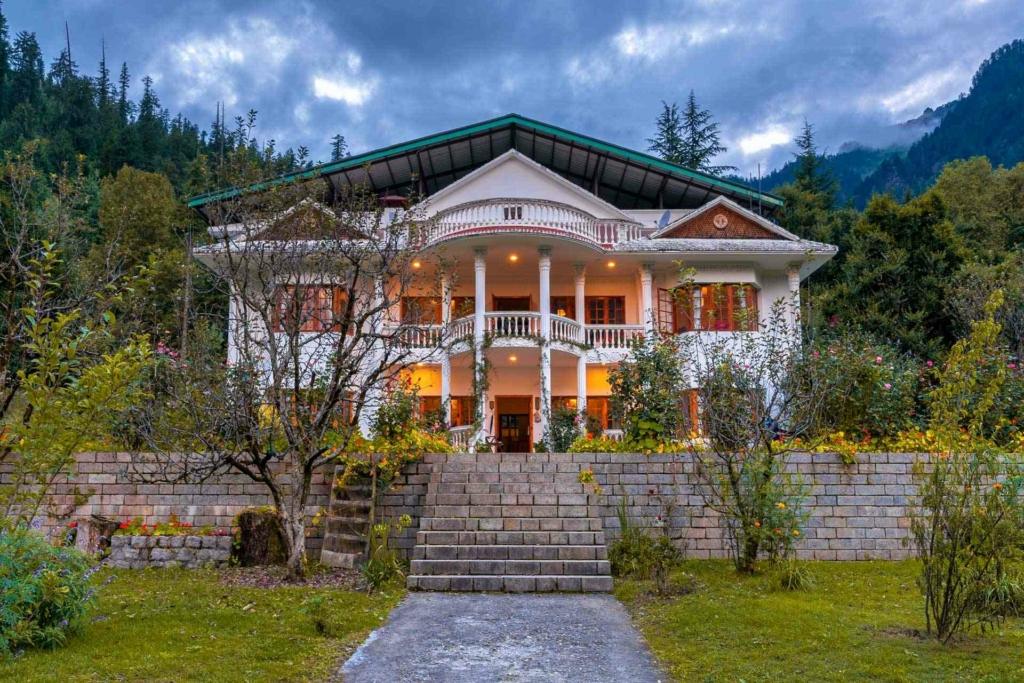
- A villa located above Manali, close to the Hidimba Devi Temple, with lawn, bonfire and mountain views.
- Good for acclimatisation or rest before/after a high-altitude wildlife expedition.
- Key strengths: Candle-lit bonfire nights, green lawns, caretaker & housekeeping.
StayVista at Amritalaya, Kullu
- 2-/4-bedroom villa in Rainson Bihal, Kullu.
- Proximity to Bhuntar airport & valley access makes it a strategic stop en route to further high-altitude zones.
StayVista at The Hush Escape, Arki (Solan)


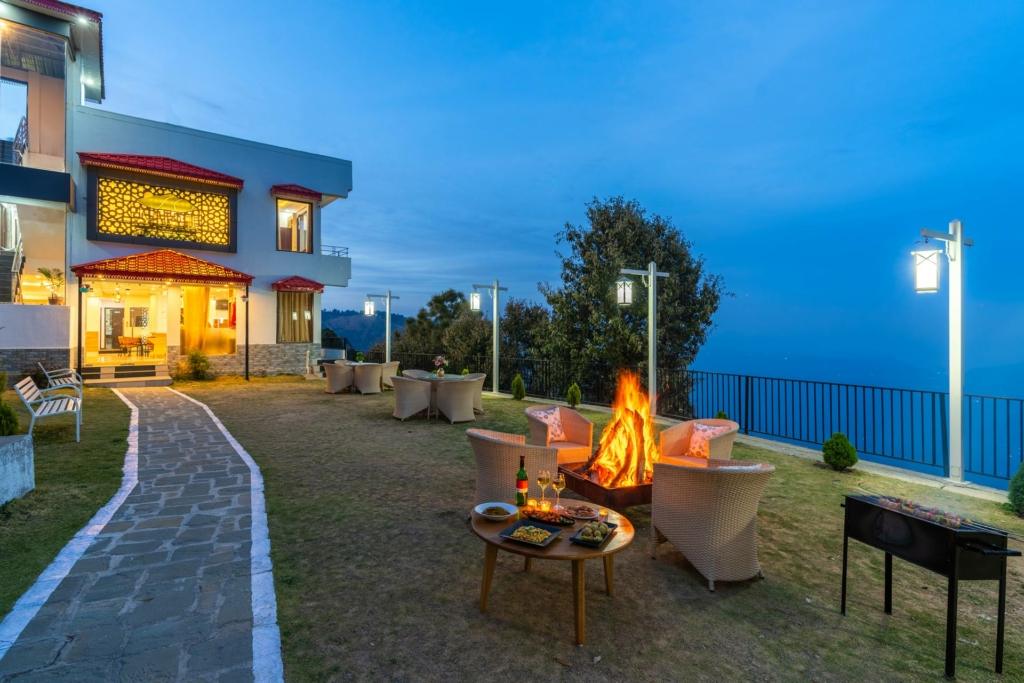
- 5-bedroom luxury villa with valley views, terrace, outdoor fireplace
- Works well as a larger-group base for families or friends with a wildlife trip component.
StayVista at The Woods, Chail
- Villa with indoor fireplace, BBQ, mountain views; in a quieter forest‐hill setting.
- A good “escape” stay, perhaps after a cold expedition — less remote than Spiti but still scenic.
FAQs About Snow Leopard Spotting in Spiti Valley
The best time is between mid-January and early March, when prey species move to lower altitudes and leopards follow them.
Moderate to challenging due to altitude and cold. Acclimatize for 2–3 days in Kaza or Leh before trekking.
Yes, via the Kinnaur route (Reckong Peo–Kaza). The Manali route closes after October due to heavy snow.
Both are exceptional. Spiti Valley offers raw wilderness and community eco-stays, while Hemis National Park has the highest density of snow leopards.
5. Are there StayVista villas near these destinations?
Yes—Manali and Leh have comfortable StayVista villas ideal for rest before or after expeditions.
Where Silence Roars
Witnessing a snow leopard in the wild is not just a wildlife experience—it’s an encounter with the raw pulse of the Himalayas.
Whether it’s Kibber’s frozen ridges, Pin Valley’s icy trails, or Hemis’s sacred slopes, each moment feels timeless.
And after days of patient tracking, coming home to the warmth of a StayVista villa—with hot chai, heated rooms, and panoramic snow views—makes the journey complete.
Snow leopard spotting in Spiti Valley in winter is not just a trip; it’s India’s ultimate winter wildlife pilgrimage.
Banner Image Credit: Snow Leopard Trust via Wikimedia Commons




